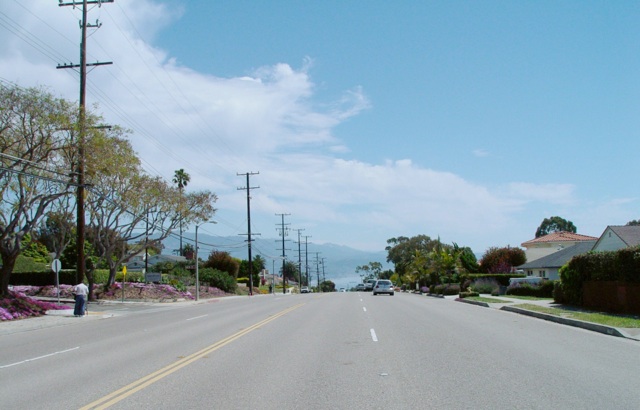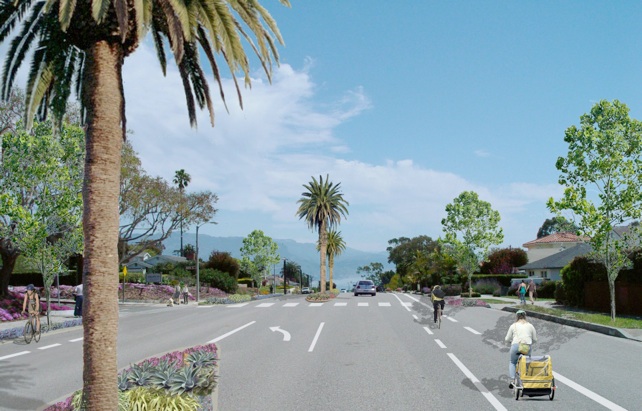
cliff drive - a proposal
a balanced transportation solution, giving equal rights to cars, bicycles and pedestrians; with slower speeds and more landscaping.


Existing Cliff Drive at Shifco
How it could be transformed
This plan view illustrates a typical stretch of Cliff Drive, incorporating a “T” intersection, street parking for residences, pedestrian crossings, bike lanes, and medians; with landscaping replacing some of the excess pavement left by repurposing two vehicle traffic lanes. This is not a “one size fits all” solution, each section of Cliff will require a different combination of these elements to best fit the conditions and create the best result.
The existing sidewalk, curb and gutter is largely preserved, except at pedestrian crossings; and landscape spaces are simply carved out of the existing pavement. By saving most of the existing storm drains, curbs and gutters, much of the high cost of moving and rebuilding these systems is avoided. The incorporation of bio-swales and appropriate plant and ground cover materials into the landscaping will reduce storm runoff and increase water percolation without requiring irrigation. Trees will provide shade for pedestrians and habitat for birds.
The re-purposing of two traffic lanes will change the pace and content of transportation on Cliff Drive, but the volume of vehicles it actually needs to carry, given the limits of growth, will not be restricted. Coast Village Road, Upper De La Vina and Middle State Street are examples of other two and three lane traffic corridors in the Santa Barbara area that carry similar or heavier traffic loads. A key element of this approach is to reduce the speed limit to 35 mph. Lower speed limits allow vehicles to safely travel closer together when necessary, maintain the carrying capacity of a higher speed, but add only seconds to travel time.
This balanced design gives bicyclists a consistent and continuous path, well marked with striping or a change in pavement material or color; and pedestrian crosswalks with reduced crossing distances providing better access to the bus system and a safer walking experience between the neighborhoods. Generous space is left for residential parking and bus stops; and all modes of transportation can flow efficiently through an enhanced parkway.

MESA ARCHITECTS
a neighborhood volunteer group